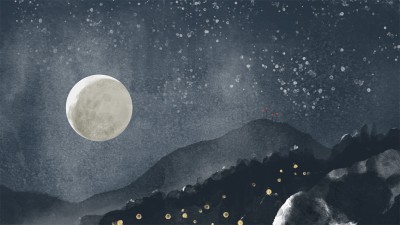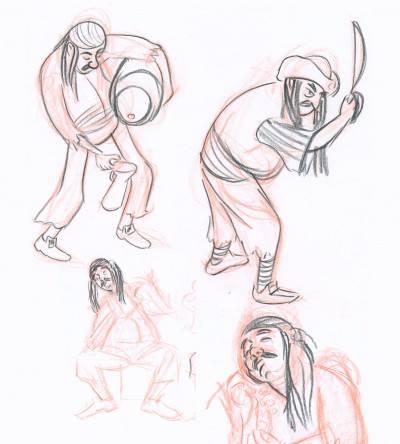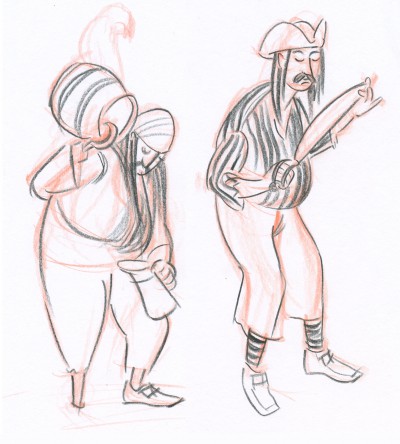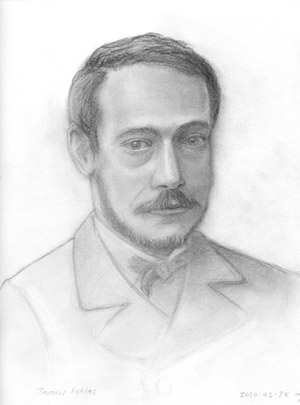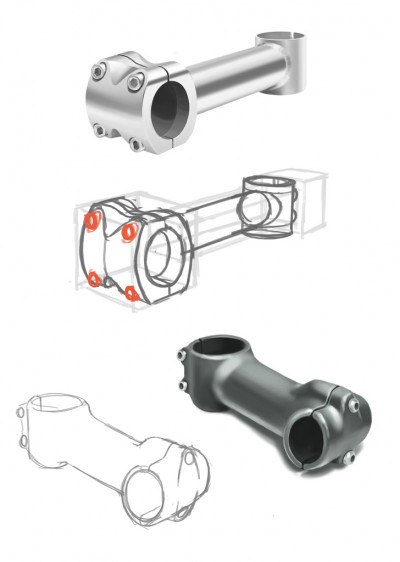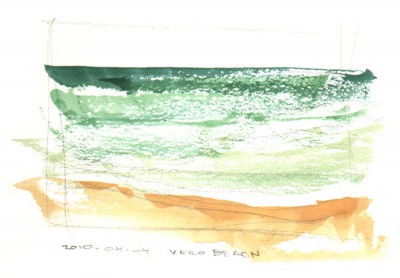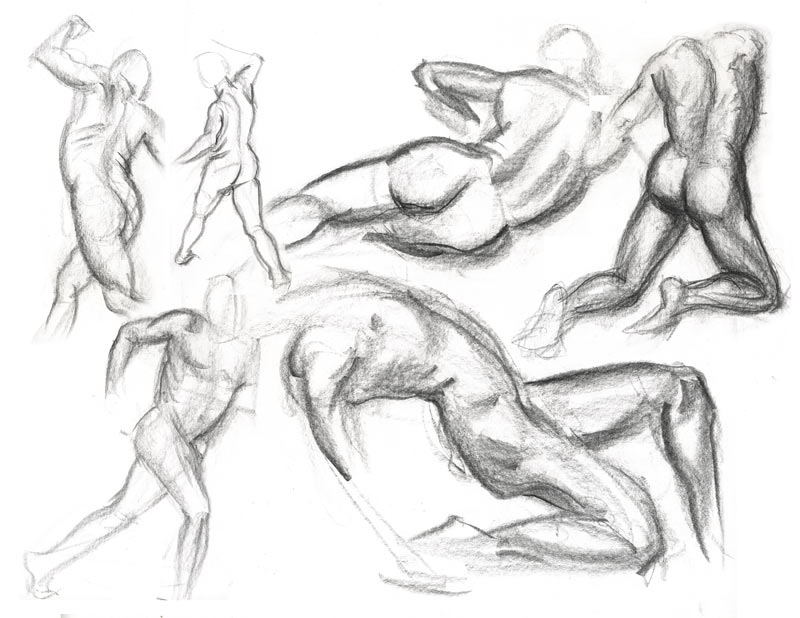A quick sketch of the Verdugo Mountains done in Photoshop, based on an iPhone picture snapped on my drive home from work. The day’s last direct light was hitting the tops of the Verdugo Mountains like a spotlight, and I wanted to try to replicate the change in contrast and hue where the shadow crept up the hill. Also interesting, the San Gabriel Mountains in the distance were getting some light spilled on them in a similar fashion, but the contrast and value were much lighter due to light scattering in atmosphere. Getting the value and contrast right gives them that feeling of distance, so thank you Photoshop for being able to tweak that without consequence until it looked right.
Bought a great set of “watercolor” brushes for Photoshop by Kyle T. Webster and was playing around with them. Still trying to get used to what they can do, but I like them for adding texture for naturalistic effects or to break up areas that would otherwise be too smooth and solid.
A couple watercolor sketches of hills in the Black Diamond Mines Regional Preserve, near Antioch, CA. The Bay Area has many landscapes like this. My favorite part of the drive up from Los Angeles is a similar area on the 152 outside of Gilroy — especially in the spring when there’s been enough rain to turn everything bright green (not pictured).
Some old drawings from an uninstructed gesture drawing workshop at Nickelodeon. Piracy has become so sophisticated that most old-style buccaneers can’t find work in their trade, but Nick keeps a couple on the payroll for study of their costume and expression. With the emphasis placed on drawing squinty sneers and tattered rags, I gather that most animation is based on careful study of these fellows.
A pencil drawing of Thomas Eakins’ head from a photograph in A Drawing Manual by Thomas Eakins. Back when I had more time on my hands, I lived closer to The Beverly Hills Public Library and its amazing selection of art books. The Eakins book was based on lectures delivered at the Pennsylvania Academy of the Fine Arts in the late 19th century and was largely a technical discussion of perspective with an interesting section about reflections on water. Unlike books on art technique of a similar vintage, there is no public-domain PDF available on the web — the Eakins book was published posthumously in 2005 based on an abandoned manuscript.
I think the bearded fellow is from the cover of a giant red Wrox tome called Professional XML. His question is a reminder that the joy in drawing is at least as much about the mental process and experience of making a drawing as it is about the finished product. Which is a good thing to remember when drawings are turning out the way I’d like them to.
Some more Photoshop painting practice. I’ve been looking at a lot of bike parts lately, and the different materials and finishes of these stems seemed like good subjects for study of how light creates the impression of their surface qualities. After spending a bit of time on these, it was clear they would have benefited from more time spent on creating a solid drawing, but it was still worthwhile. There’s just something deeply satisfying about shiny things.
Watercolor sketch of the Atlantic Ocean from a while back. Mostly trying to get a feel for the color — a gradient of beautiful blue-greens — but also some surface effects with with the texture of the paper.
From a lunchtime drawing session last week. I just wrote those words. Lunchtime drawing session. Awesome.
Not quite sure how to approach this kind of gesture sketch. I see some people translating the model into fantastic cartoon drawings. I barely have enough time to scratch out the structure of the pose. By then end of the class I’d settled on a method of working in a light color, and then, once I’d taken in the whole pose with my eyes and pencil, going back with a black Prismacolor and trying to place a series of quick, definite marks.
Short poses focus the mind. When drawing this fast, all one’s attention must be brought to the task. I’m still working on that, but the practice is always good.
In going through drawings from the last few classes, I’m struck by how diminished they seem after some time away from them. In the process of seeing the model and putting something down on paper, my mind convinces itself that what comes out is a reasonable approximation, but in the absence of the source impression, these versions are drained of some life.
Of course, these are not meant to be fine drawings. Rather, they are samples from a continuous process of learning, and it’s encouraging when I can look at the drawings and confirm that I’m making some progress.
On this particular night, I felt that I gained some clarity regarding the instructor’s emphasis on drawing with the side of the pencil. Holding the pencil lightly, almost parallel to the paper’s surface, with four fingers on top and a thumb underneath, allows one rotate the wrist and arm to make a mark in almost any direction. Given this freedom of movement, strokes can be oriented to the surface being rendered as as if one is feeling the hand move over the three dimensional surfaces of the body.
Additionally, using this grip to produce a broad stroke from the flat side of the pencil while bearing down on the tip slightly gives strokes a hard edge on one side and a soft edge on the other — replicating the way light and shadow reveal a curved surface in a single stroke.


